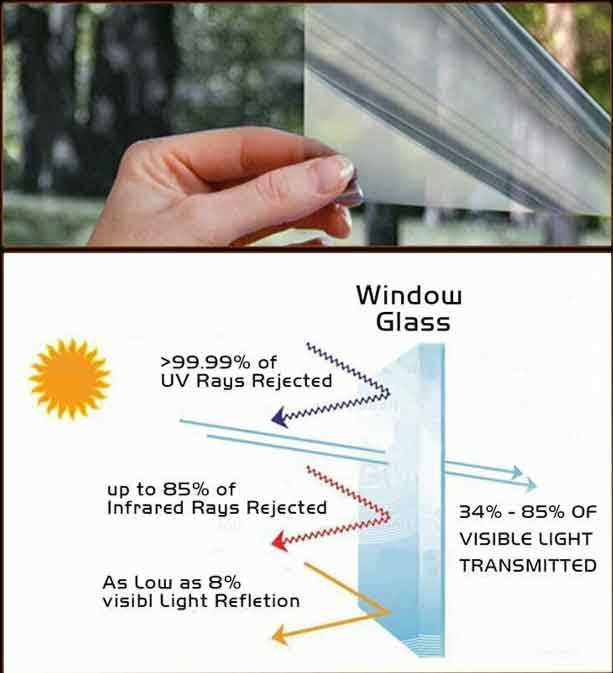Last Updated on February 12, 2024 by Vadym

Window tinting is a popular choice for car owners who want to add privacy, reduce glare, and protect their vehicle’s interior from harmful UV rays. When getting window tint installed, many people wonder if the tint will get darker as it cures. In this article, we will explore this common question and provide you with the answers.
The short answer is no, window tint does not get darker as it cures. When window tint is applied, it may appear slightly darker due to moisture trapped between the film and the window. However, as the tint dries and the moisture evaporates, it will become lighter and clarify.
It is important to note that the initial darkness of window tint can vary depending on the brand and type of film used. Some films are naturally darker, while others allow more light to pass through. Additionally, the darkness of the tint may also be affected by the type of glass and the temperature and humidity during the installation process.
Overall, if you are looking for a specific level of darkness for your window tint, it is best to consult with a professional installer who can recommend the best type of film and darkness level to meet your needs. They will be able to guide you through the installation process and ensure that you achieve the desired results.
What Happens to Window Tint as it Cures?
Window tint is a thin film that is applied to the windows of vehicles or buildings to reduce the amount of heat and light that enters. After the tint is applied, it goes through a curing process where it bonds with the glass and dries. This curing process is essential to the longevity and effectiveness of the window tint.
During the curing process, the window tint may appear hazy or slightly cloudy. This is a normal part of the curing process, and it should not be a cause for concern. As the tint cures, this haze will gradually dissipate, leaving behind a clear and smooth finish.
Additionally, the tint may initially appear lighter in color when it is first applied. However, as it cures, the color will become darker and more uniform. This is because the curing process allows the adhesive in the tint to fully bond with the glass, resulting in a darker and more consistent appearance.
It is important to note that the final appearance of the window tint may take some time to fully develop. The tint may continue to cure and darken for several days or even weeks after it is initially applied. It is recommended to avoid cleaning the tint or rolling down the windows during this curing period to ensure optimal results.
| What Happens to Window Tint as it Cures? |
|---|
| Window tint goes through a curing process where it bonds with the glass and dries. |
| The tint may appear hazy or slightly cloudy during the curing process, but this will dissipate over time. |
| The tint may initially appear lighter in color, but it will become darker and more uniform as it cures. |
| The final appearance of the tint may take time to fully develop, and it may continue to darken for several days or weeks. |
Understanding the Window Tint Curing Process

When you get a new window tint installed on your vehicle, it undergoes a curing process that allows the tint to fully adhere to the window and achieve its desired darkness. Understanding this curing process is important for both the longevity and appearance of your window tint.
During the curing process, the adhesive used in window tint slowly dries and bonds with the glass. This process can take anywhere from a few days to several weeks, depending on the type of tint and the climate conditions. As the adhesive dries, the window tint will become progressively darker.
It’s important to note that the darkness or shade of the window tint is determined by the film itself, not by the curing process. The curing process simply allows the film to fully adhere to the window, resulting in a more even and durable tint. So, while the window tint may appear darker as it cures, it is not actually getting darker.
During the curing process, it’s best to avoid rolling down your windows or cleaning the tinted surface. Doing so could disrupt the drying process and potentially cause the film to peel or bubble. It’s recommended to wait at least a few days before rolling down your windows or cleaning the tinted surface, and to use a non-ammonia-based cleaner to prevent any damage to the tint.
It’s also worth noting that the curing process can be affected by outside factors such as temperature and humidity. In warmer climates, the curing process may be faster due to increased heat and humidity, while in cooler climates, it may take longer. It’s important to be patient and allow the tint to fully cure before exposing it to extreme temperatures or harsh cleaning chemicals.
In conclusion, understanding the window tint curing process is vital for maintaining the appearance and longevity of your tint. By allowing the tint to fully adhere to the window and following the recommended care instructions, you can ensure that your window tint will last for years to come.
How Long Does Window Tint Take to Cure?
Window tint is a popular option for many car owners who are looking to enhance the appearance and privacy of their vehicles. However, after getting window tint installed, it is important to allow it to properly cure before exposing it to any moisture or cleaning. The curing process is crucial to ensure that the tint adheres properly to the glass surface and lasts for a long time.
The time it takes for window tint to fully cure can vary depending on several factors such as the type of tint film used, the climate conditions, and the quality of the installation. In general, it is recommended to wait at least 48 to 72 hours before cleaning the newly tinted windows.
During the curing process, it is normal for the tint to appear hazy or slightly discolored. This is because the tint film contains a wet adhesive that needs to dry completely to achieve its final appearance. As the tint cures, the haze will gradually disappear, and the film will become clearer and more vibrant.
It is important to follow the manufacturer’s instructions and the advice of your tint installer regarding the curing time. Some tint manufacturers may recommend longer curing times, especially for certain types of tint films or in specific climate conditions.
While it may be tempting to touch or clean the tinted windows immediately after installation, doing so can disrupt the curing process and potentially damage the film. It is best to be patient and avoid any contact with the tinted windows until they have fully cured.
In conclusion, the time it takes for window tint to cure can vary, but it is generally recommended to wait at least 48 to 72 hours before cleaning or exposing the tinted windows to moisture. Patience is key to ensuring that the tint adheres properly and lasts for a long time, so it is important to follow the manufacturer’s instructions and the advice of your tint installer.
The Factors That Affect the Darkening of Window Tint
Window tinting can enhance the aesthetic appeal of a vehicle or building, reduce glare, and provide privacy. Many people wonder if window tint gets darker as it cures. While window tint may initially appear faint, it typically darkens over time due to various factors.
The primary factor that affects the darkening of window tint is the type of film used. Some window tint films are designed to darken significantly as they cure, while others may have a more subtle darkening effect. It is essential to choose a film that meets your desired level of darkness so that you are satisfied with the end result.
Another factor that can influence the darkening of window tint is the amount of sunlight it is exposed to. Window tint exposed to direct sunlight will generally darken faster compared to tint in shaded areas. The UV rays from the sun speed up the curing process and contribute to the overall darkening effect.
The quality of the window tint film can also impact the darkening process. Higher-quality films tend to have superior light-absorbing properties, which can lead to a more significant darkening effect. Cheaper films may not darken as much or may show signs of fading and discoloration over time.
Additionally, the environment in which the window tint is installed can play a role in its darkening. Factors such as humidity, temperature, and air circulation can affect how quickly the tint cures and darkens. It is essential to follow the manufacturer’s instructions for curing the tint properly to achieve the desired darkness.
In conclusion, window tint typically darkens as it cures due to various factors such as the type of film used, exposure to sunlight, film quality, and the installation environment. Understanding these factors can help you choose the right film and achieve the desired level of darkness for your window tint.
Common Misconceptions About Window Tint Curing
When it comes to window tinting, there are many misconceptions about the curing process. Understanding the truth behind these myths can help you make informed decisions about your window tinting project.
Myth #1: Window tint gets darker as it cures.
Contrary to popular belief, window tint does not get darker as it cures. In fact, the tint may appear slightly lighter right after installation due to moisture trapped between the film and the glass. As the moisture evaporates, the tint will settle and achieve its final color. It is important to be patient and allow the tint to fully cure before evaluating its darkness.
Myth #2: Window tint needs sunlight to cure.
While sunlight can speed up the curing process, window tint does not necessarily require direct sunlight to cure. The curing time is primarily determined by the type of tint used and the ambient temperature. A professional tint installer will ensure that the tint is properly cured, even if sunlight is not readily available.
Myth #3: Window tint is fully cured immediately after installation.
Window tinting is a two-step process that involves the installation of the film followed by the curing process. The curing process allows the adhesive to fully bond with the glass, ensuring a long-lasting and durable tint. It is crucial to avoid rolling down the windows or applying any pressure to the tint before it is fully cured to prevent damage.
Myth #4: Window tint will never fade or bubble.
While high-quality window tint is designed to resist fading and bubbling, it is not completely immune to these issues. Over time, exposure to sunlight and harsh weather conditions may cause the tint to fade or develop bubbles. Regular maintenance and proper care can help prolong the lifespan of the tint and minimize these issues.
By debunking these common misconceptions, you can approach your window tinting project with realistic expectations. Remember to consult with a professional tint installer who can provide expert advice and ensure that your window tint is properly installed and cured.
